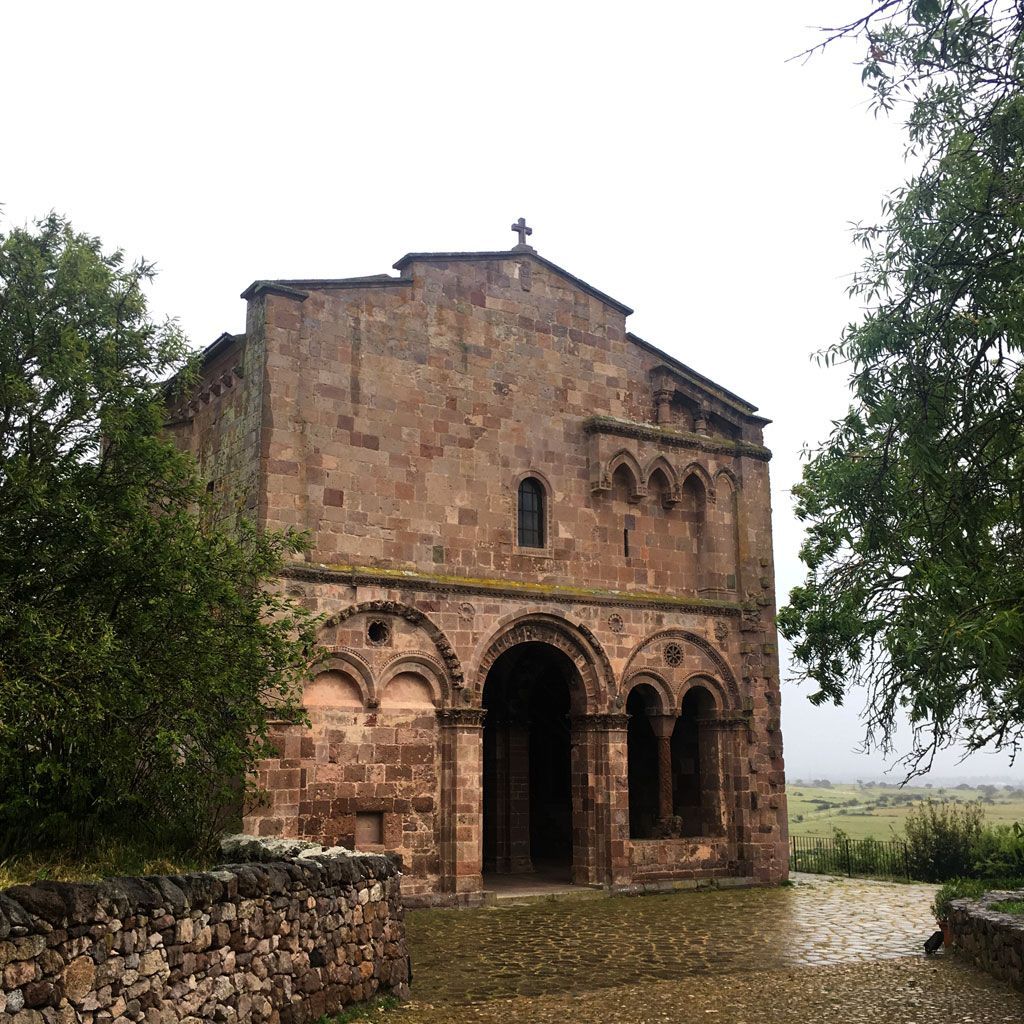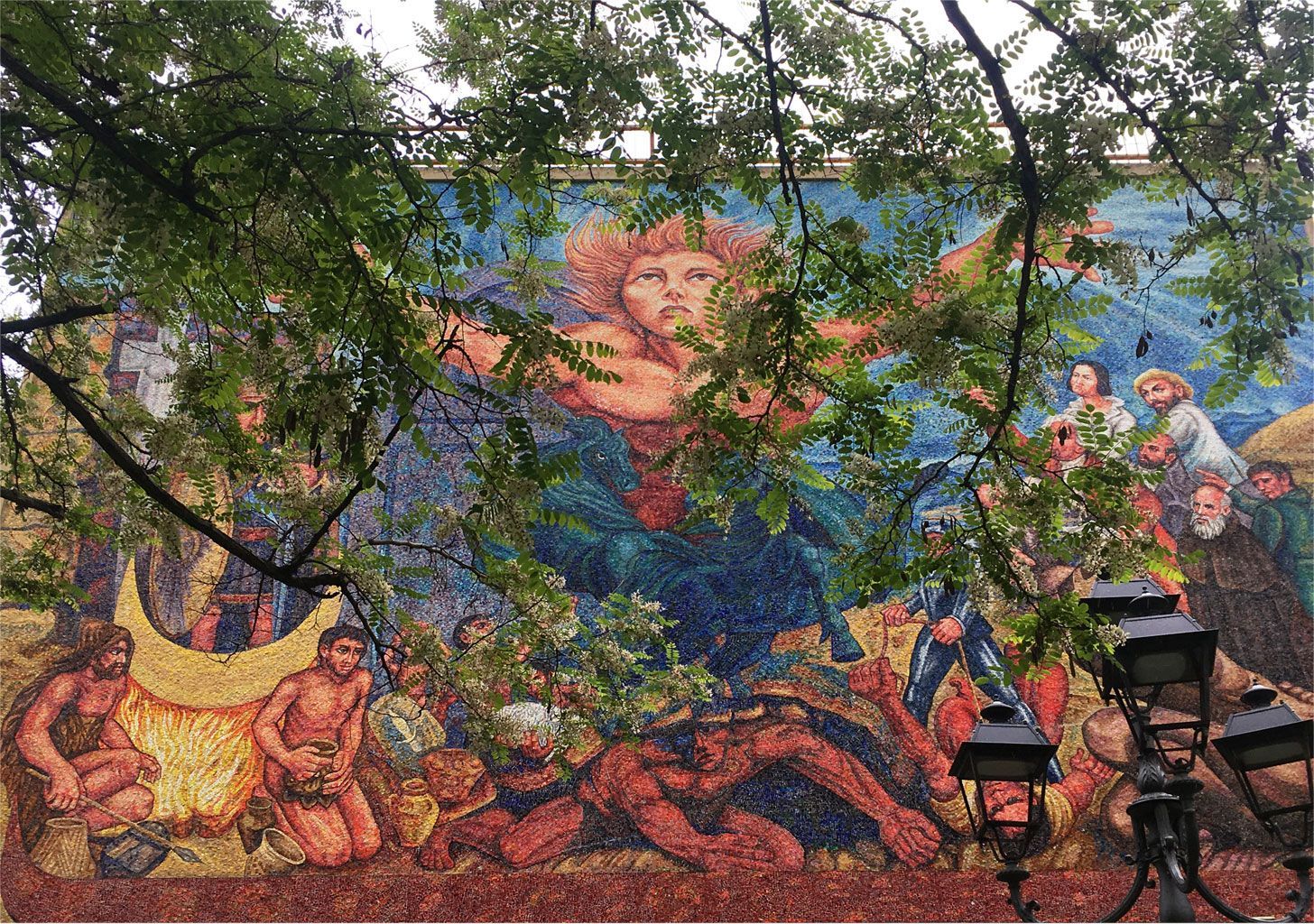
171/377: Ozieri
INSPIRATION

No trip at all today! I am already in the territory of Ozieri therefore the movement is only from the b&b Salighes to the b&b Carru de Ammentos, “the cart of memories” that Giuseppina, the owner, has kept in the family home, objects and old photographs. The b&b is right in the center, in front of a historic building and from the balcony I can admire this town, with its neoclassical and liberty style buildings, many of which have the characteristic ‘altana’, a covered terrace bordered by a colonnade, which I have already observed yesterday in Nughedu San Nicolò. Some also have the ‘suttea’, a turret at the top of the roof. All signs of the nobility that inhabited this beautiful town.
Giovanni Antonio and Tittino from the Rural Heritage association, which promote the local assets and link local business in a network, and Rosa Maria, who hosted me yesterday, join me and guide me through the center, telling me about places and history. We start from Piazza Carlo Alberto, known to all as ‘Cantareddu’, where the Diocesan Museum, now closed, is located, which contains an important triptych by the Master of Ozieri, an anonymous painter of the sixteenth century.

We go up via Vittorio Emanuele, a street that everyone knows as ‘sa ena’, the vein, because water flowed through it, and we arrive at the beautiful Grixoni fountain, all in precious marble. Walking through the streets of the centre almost all the buildings are historic and elegant. Rosa Maria reminds me that Ozieri was the first town in Sardinia that received night-time electric lighting through street lamps. We cross the ancient district of Donnigaza, the oldest, and arrive at an ancient building, the former Equestrian Growth Institute, where the island’s equine fertilization service was organised. The Anglo-Arabian-Sardinian horse was born right here. This beautiful palace was the first home of the Viceroy, of the Borgia family. The underground, still open to visitors, were used as prisons.

From here we arrive at the Archaeological Museum, whose headquarters was the convent of the Poor Clares, next to which is the church of the Rosary. The director Giovanni guides us through the beautiful finds, among which many come from the grotto of San Michele, not far from here, where the culture of Ozieri originated, dated around 3000a.C. Others come from the medieval village of Bisarcio, like a beautiful copper ingot. Leaving the museum we skirt the beautiful cathedral from the 1200s, enlarged and restored several times over the centuries, inside which there are some beautiful paintings by Marghinotti, a Sardinian painter of the nineteenth century. Descending into the gardens in the lower part of the city we admire (now in the rain) the beautiful mosaic by Aligi Sassu depicting Prometheus.

After a quick aperitif, Giovanni Antonio and I take the car, passing by Chilivani, where the important railway junction is located, for a visit in the rain to the beautiful medieval basilica of Sant’Antioco di Bisarcio, once the church of the village of which no trace remains, all built in pink trachyte typical of the area. It is now time for lunch and Giovanni Antonio takes me to Monte Zuighe, a territory of volcanic rocks, within which there are numerous archaeological sites and thousand-year-old trees. But we’re here to eat! We are invited by Giuseppe from Orune in his agritourism, which does not deny the sense of hospitality of the Nuorese villages and delights us with its products, all local.

In the afternoon, with a much fuller stomach, we move to visit the church of the Beata Vergine di Monserrato, on a hill from which you can enjoy the whole panorama of the Meilogu. Then we arrive at the hamlet of San Nicola, a satellite neighborhood of Ozieri, among whose modern houses are the remains of the nuraghe Sa Mandra ‘e Sa Jua, and not far away the little church of San Nicola. As a last stop (or almost …) we go to the Dolci Peano chocolate factory, where Michele and his son Davide show me how their desserts are produced, among which the famous ‘sospiri’ (sighs) of which they give me a large quantity as an energy supply for the travel!

When the day is almost over, the interesting part begins! We go to the headquarters of the Ozierese Cycling Society where Giovanni Antonio organised a meeting with the Bonayres, a band that plays original arrangements of tango pieces. Piermario, Giuseppe, Antonio and Marcellino (the repairer of pianos met yesterday in Nughedu San Nicolò!) delight me with some pieces by Piazzolla, to which I also join. Here Maria Vittoria joins us, a traveler and blogger, also a member of the Rural Heritage association, who organised the next musical meeting, the one with the prestigious Choir of Ozieri. We move to their headquarters, where many welcome me warmly. As soon as they start singing I remain open-mouthed, a full sound that invades the room. They conclude with S’Ultima Serenada, a beautiful song by their teacher Mario Coloru that unfortunately could not come tonight. Good opportunity to meet them again one day!
We conclude the evening at the La Torre restaurant, right next to the choir, where Lilla, Giovanni Antonio’s wife, joined us. Excellent dinner, after which, having returned to Giuseppina’s b&b, I am hit by a ‘Carru de sónnios’ a ‘cart of dreams’.
SOUND FRAGMENTS

SHORT SARDINIAN STORIES
Ozierese people are travelers. “Shardana on Trip” is Andrea’s Facebook page, a guy from Ozieri who, like me, had made up his mind to travel Sardinia by bicycle to collect experiences, stories, learn about places and people, and tell them. Andrea has temporarily interrupted his pilgrimage in Sardinia and hopefully he will be able to resume soon, maybe before the end of my tour we will meet. “Boy on Shoulders” is the blog of the mother Giuseppina, of the little Michele, and of the father Paolo, where they tell of places, Sardinian and not, visited by the happy Ozierese family. In telling about places and experiences, importance is given to highlighting the “child-friendly” aspects of the journeys undertaken (during which the other members of the family, the dog Otto and the goldfish Andrea and Leonardo are entrusted to the care of others). “Flanieren in Sardinia” is the travel blog in Sardinia held by the Janelas association based in Ozieri. The site contains “stories about small villages, towns, such as Ozieri, Oristano or Iglesias, on the most exciting ways to enjoy landscapes, the most pleasant swims, the most interesting literary and musical festivals, the most intense feasts, archaic Carnivals, the more particular and amusing ones”.
From Wikipedia: “Su patriotu sardu a sos feudatarios (literally The Sardinian patriot to the feudal lords), also known from his incipit as “Procurade ‘e moderare”, is a revolutionary and anti-feudal composition written in the Savoy era by Francesco Ignazio Mannu, magistrate of Ozieri, during the Sardinian revolutionary uprisings”. This poem, which contains 47 stanzas, is considered a national anthem in Sardinian popular culture, to the point that it was also officially recognised by the institutions. It was interpreted musically by innumerable Sardinian artists (Maria Carta, Tazenda, Piero Marras, Elena Ledda among the many) and even Ciccittu Masala of which I spoke in the page of Nughedu San Nicolò, he ‘stole’ some verses of Mannu to insert in his poem “Innu nou contra sos feudatàrios (a sa manera de Frantziscu Innàssiu Mannu)” / New hymn against the feudal lords (in the manner of Francesco Ignazio Mannu), where he reproposes themes of revolt against the new oppressors.